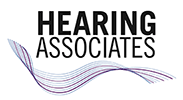
When the majority of people think about hearing aids, they think of traditional devices that boost sound through the ear canal. For individuals struggling with specific hearing impairments, such as relentless ear problems or unilateral deafness, an alternative solution might supply enhanced sound quality and user comfort: bone conduction hearing aids.
How Bone Conduction Hearing Devices Work
With bone conduction hearing devices, the outer and middle ear are bypassed. Rather than depending on airwaves to transmit sound, these devices utilize the skull’s bones to channel vibrations directly to the cochlea, the inner ear’s sound-processing center. This allows sound to get to the auditory nerve even if there is a blockage or injury in the ear canal. Think of it like this: If you’ve ever stopped up your ears and still heard your voice when speaking, that’s bone conduction.
Bone Conduction vs. Traditional Hearing Aids
Conventional hearing aids boost sound and funnel it through the ear canal. This approach is especially effective for individuals who have experienced damage to the inner ear or the nerve in charge of transferring sound, causing sensorineural hearing loss. But if the issue is with the outer or middle ear, due to infection, fluid accumulation, or structural problems, standard hearing aids might not be reliable or comfortable. Bone conduction hearing devices are often a more effective option in such situations as they avoid the problematic regions and transfer sound directly to the cochlea.
Best Candidates For Bone Conduction
Bone conduction devices are beneficial for:
- Conductive hearing loss, when sound has trouble traveling through the outer or middle ear at all.
- Persistent ear infections or drainage problems, where traditional hearing aids could worsen the condition.
- Individuals with flawed ear canals or the absence of outer ears, who may not qualify for conventional devices.
- Single-sided deafness (SSD), where one ear has profound hearing loss or no hearing. These gadgets provide a non-intrusive option that is frequently more comfortable, especially for people, both young and old, who experience recurring ear issues.
Implantable vs. Non-Implantable Options:
There are two primary types of bone conduction hearing devices:
- External non-implantable devices are usually secured with a headband, softband, or adhesive pad. They’re suitable for children, people trying bone conduction for the first time, or people not ready for surgery.
- Implantable (surgically placed): These devices include a small implant under the skin that connects with an external sound processor. They tend to provide more robust performance and reliability for long-term users. A professional assessment by an audiologist or ENT specialist will identify the most appropriate solution for you, considering your age, particular anatomy, and personal hearing objectives.
Key Advantages of Bone Conduction Hearing Devices
- Ideal for sensitive ears – does not necessitate insertion into the ear canal
- Good audio quality stays consistent, in spite of recurring problems with the ears
- Great for unique anatomy– helpful for individuals born without a complete outer ear or with other structural variations
- Improved communication– especially in school, work, or noisy settings
If you or your child struggles with hearing in one or both ears, especially due to chronic infections or conductive problems, bone conduction hearing devices could be worth exploring.
Make an appointment with an audiologist today to get more information.
Sources: https://www.dukehealth.org/treatments/ear-nose-and-throat/bone-conduction-hearing-aid https://www.hopkinsmedicine.org/health/treatment-tests-and-therapies/baha–the-implantable- hearing-device https://www.ndcs.org.uk/advice-and-support/all-advice-and-support-topics/hearing-aids- implants-and-assistive-technology/ hearing-aids-and-implants/ bone-conduction-devices https://my.clevelandclinic.org/health/treatments/14794-bone-anchored-auditory-implant
